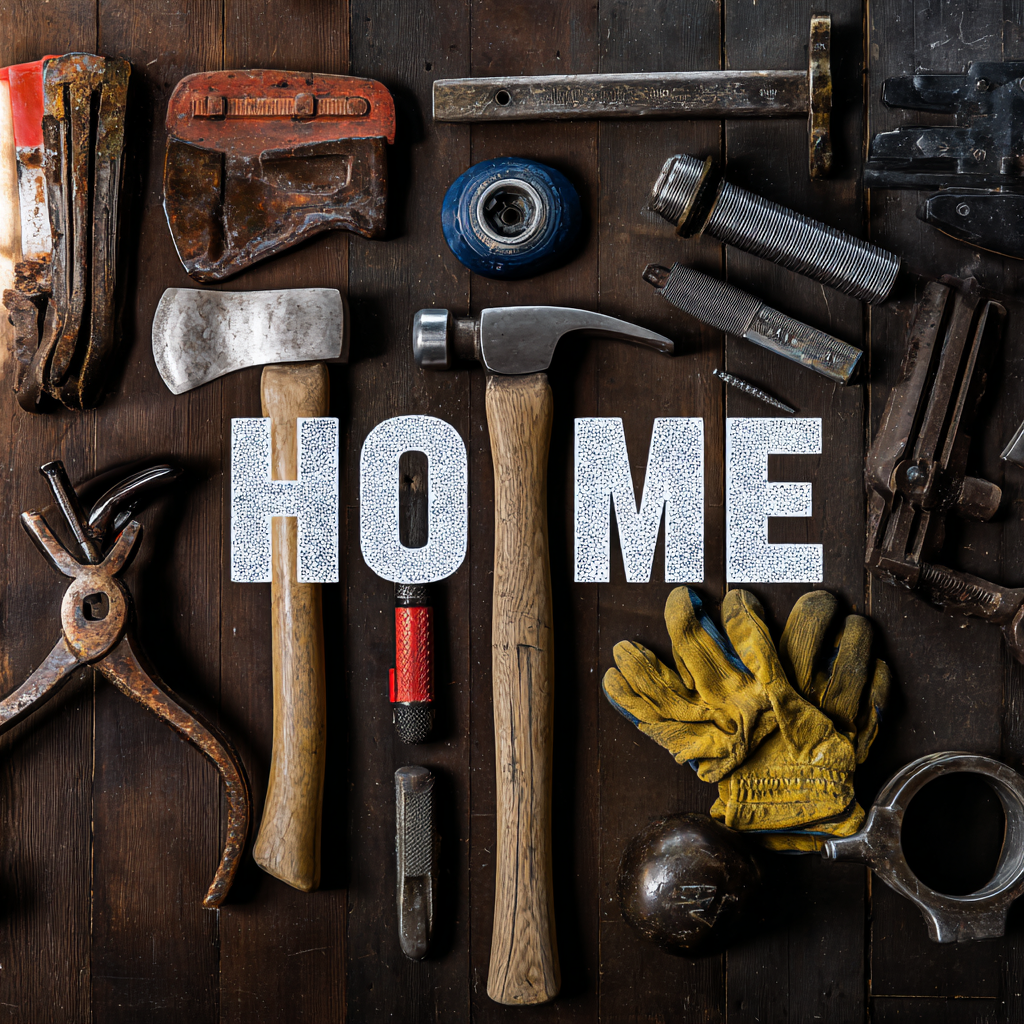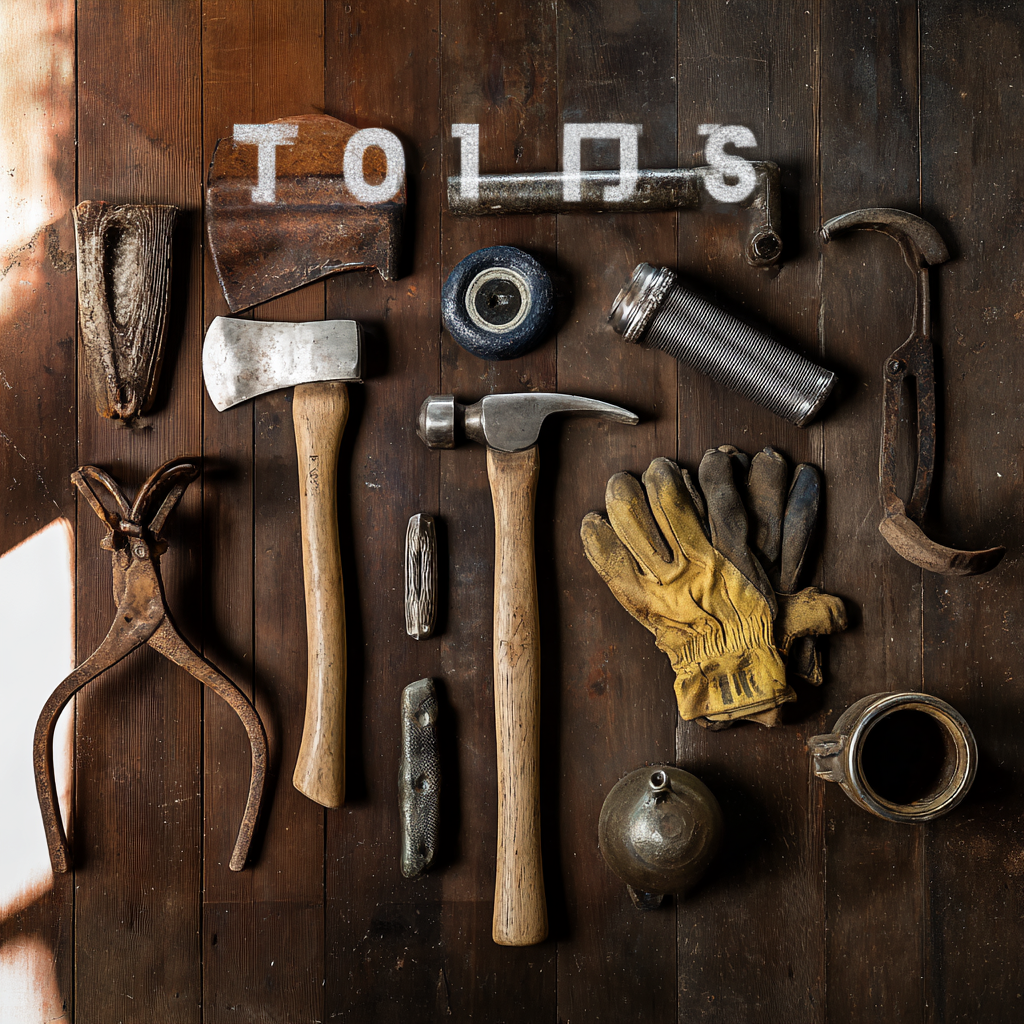Blog
How to Choose the Best Tools for Your Home Improvement Projects
In the realm of home improvement, selecting the right tools is paramount to the success of any project. According to the Home Improvement Research Institute, the U.S. home improvement market is projected to reach $420 billion by 2025, underscoring the growing investment homeowners are making in renovations and DIY projects. With countless options available, understanding how to choose the best tools for your home improvement projects is essential for efficiency and safety. The Tools Home can often make the difference between a project completed with ease or one fraught with challenges. By employing top strategies for tool selection, homeowners can not only enhance their skills but also ensure that their investments yield the highest return in both functionality and aesthetics.

Understanding the Importance of After-Sales Service in Home Improvement Tools
When selecting tools for home improvement projects, many consumers often overlook the significance of after-sales service. A report from the Home Improvement Research Institute highlights that nearly 60% of homeowners encounter issues with their tools post-purchase, making robust after-sales support crucial. Effective after-sales service can enhance customer satisfaction and encourage repeat business, fostering brand loyalty essential in a competitive market.
Tip: Always inquire about the warranty and service policies before making a purchase. A strong warranty can protect your investment and provide peace of mind, especially for high-ticket items.
Moreover, the quality of after-sales service can significantly influence a homeowner's choice of tools. A survey by the DIY Tools Association found that 75% of customers would choose a brand that offers excellent after-sales support over a cheaper alternative. This reflects the growing awareness among consumers that proper maintenance and service can prolong the lifespan of tools, ultimately saving money over time.
Tip: Look for brands with solid reputations for service and consider user reviews that specifically mention after-sales experiences. This can provide insight into how easily you can obtain support when needed.
Evaluating Repair Costs: A Key Factor in Tool Selection
When planning home improvement projects, evaluating repair costs is crucial in selecting the right tools. According to a report from HomeAdvisor, homeowners can expect to spend an average of $4,000 to $12,000 on major renovations. To ensure you're not overspending on tools, consider your project's scope and long-term use. Investing in high-quality tools might appear costly at first, but they often lead to savings over time by reducing the need for replacements and repairs.
**Tip:** Before purchasing tools, create a detailed budget that outlines all potential expenses. Research and compare prices from various retailers, as prices for the same tool can vary by as much as 20% or more. Additionally, consider rental options for tools you may only need on a one-time basis; this strategy can significantly lower your project costs while still giving you access to high-grade equipment.
As you select tools, factor in their durability and versatility. According to a survey by the National Association of Home Builders, 70% of contractors recommend multi-functional tools to save costs and space in your toolbox. This not only streamlines your work but also minimizes the likelihood of overspending on unnecessary equipment. Always consider the return on investment when choosing tools, ensuring that each purchase adds real value to your home improvement efforts.
How to Choose the Best Tools for Your Home Improvement Projects - Evaluating Repair Costs: A Key Factor in Tool Selection
| Tool Type | Average Cost ($) | Usage Frequency | Durability (years) | Ease of Use Rating (1-10) |
|---|---|---|---|---|
| Cordless Drill | 150 | Weekly | 5 | 9 |
| Circular Saw | 120 | Monthly | 7 | 8 |
| Hammer | 25 | Weekly | 10 | 10 |
| Level | 15 | Occasional | 10 | 9 |
| Paint Sprayer | 250 | Once a Year | 5 | 7 |
Tips for Choosing Tools Based on Warranty and Support Options
 When selecting tools for your home improvement projects, the warranty and support options offered by manufacturers are crucial factors to consider. A solid warranty not only reflects the quality and durability of the tool but also provides peace of mind for the buyer. Look for tools that come with at least a one-year warranty, but ideally, aim for products that offer extended warranties or lifetime guarantees. This way, should your tool fail due to a manufacturing defect, you won’t be left out of pocket for repairs or replacements.
When selecting tools for your home improvement projects, the warranty and support options offered by manufacturers are crucial factors to consider. A solid warranty not only reflects the quality and durability of the tool but also provides peace of mind for the buyer. Look for tools that come with at least a one-year warranty, but ideally, aim for products that offer extended warranties or lifetime guarantees. This way, should your tool fail due to a manufacturing defect, you won’t be left out of pocket for repairs or replacements.
In addition to the warranty, consider the customer support options available. Reliable customer service can make a significant difference, especially if you encounter issues or have questions about tool usage. Check for reviews or testimonials that mention the manufacturer's responsiveness and willingness to assist customers. Brands that provide online resources, such as how-to videos or detailed manuals, enhance the value of their tools by empowering you to use them effectively and troubleshoot when necessary. By thoughtfully evaluating both warranty and customer support, you can invest in tools that ensure your home improvement projects are successful and stress-free.
Comparing Features and Benefits of Popular Home Improvement Tools
When embarking on home improvement projects, choosing the right tools can significantly enhance both the efficiency and outcome of your work. A comparison of popular tools reveals that power tools, such as cordless drills, are favored for their portability and convenience. According to a recent industry report by the Home Improvement Research Institute, over 70% of DIY enthusiasts prefer cordless models due to their versatility and ease of use, especially for tasks requiring mobility around the home.
In terms of hand tools, a study conducted by the National Home Improvement Council highlights that quality over quantity is essential. Tools like adjustable wrenches and hacksaws are must-haves, as they can cover a wide array of projects. The report indicates that well-made tools not only last longer but also improve safety during use; for example, using a high-quality utility knife can reduce injury rates by up to 30%. Therefore, selecting tools that offer both durability and functional benefits can make a considerable difference in the success of your home improvement endeavors.
Popularity of Home Improvement Tools
This chart illustrates the popularity of various home improvement tools based on a survey. The scores are out of 100, reflecting their usage and preference among DIY enthusiasts.
Making Informed Decisions: Balancing Quality, Cost, and After-Sales Support
Choosing the right tools for home improvement projects requires a careful balancing act between quality, cost, and after-sales support. Recent industry reports indicate that a significant percentage of homeowners prioritize durability and performance over initial cost, with over 60% willing to invest more for tools that guarantee longevity. In the current market, high-quality tools not only enhance the efficiency of tasks but can also lead to substantial long-term savings due to reduced replacements and repairs.
Moreover, the integration of smart technology in tools offers a competitive edge that mirrors trends in other industries, such as logistics, where connected data is revolutionizing decision-making processes. Tools equipped with IoT capabilities can provide users with real-time feedback and usage analytics, similar to how fleets use connected truck data to optimize operations. This trend reflects a broader paradigm where informed purchasing decisions are based on extensive data and performance reviews, allowing consumers to select the best options that align with their project needs while ensuring that after-sales support is accessible and reliable.

